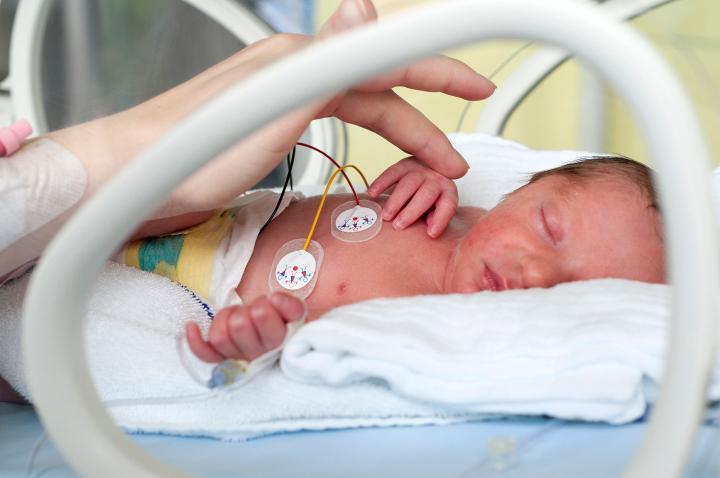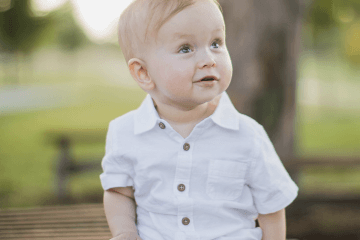Key Facts - Risk Factors for Cerebral Palsy

There are some medical conditions or events that can happen during pregnancy, delivery, or shortly thereafter that may increase a baby's risk of being born with cerebral palsy.
Cerebral palsy (CP) is caused by abnormal development of the brain or damage to the developing brain that affects a child's ability to control his or her muscles. There are several possible causes of the abnormal development or damage. People used to think that CP was mainly caused by a lack of oxygen during the birth process. Now, scientists think that this causes only a small number of CP cases.
The brain damage that leads to CP can happen before birth, within a month after birth, or during the first years of a child's life while the brain is still developing.
Some things increase the chance that a child will have CP. These are called risk factors. It is important to remember that having a risk factor does not mean that a child will have CP. Some of the risk factors include:
RISKS DURING PREGNANCY
MULTIPLE BIRTHS
Twins, triplets, and other multiple births are linked to an increased risk of cerebral palsy, especially if a baby's twin or triplet dies before birth or shortly after birth. Some, but not all of this increased risk is due to the fact that children from multiple pregnancies often are born early or with low birth weight, or both.
BLOOD TYPE INCOMPATIBILITY BETWEEN MOTHER AND CHILD
Rh incompatibility is a condition that develops when a mother’s Rh blood type (either positive or negative) is different from the blood type of her baby. The mother’s system doesn’t tolerate the baby’s different blood type and her body will begin to make antibodies that will attack and kill her baby’s blood cells, which can cause brain damage.
EXPOSURE TO TOXIC SUBSTANCES
Mothers who have been exposed to substances during pregnancy, such as methyl mercury, are at risk of having a baby with cerebral palsy.
MOTHERS WITH THYROID ABNORMALITIES, INTELLECTUAL DISABILITY, EXCESS PROTEIN IN THE URINE, OR SEIZURES
Mothers with any of these conditions are slightly more
likely to have a child with CP.
Additional risk factors
Cerebrovascular accidents including stroke or bleeding in the brain from a clotting tissue, blood vessel malformation or sickle cell disease; infection including meningitis and encephalitis in infancy, head injury due to motor vehicle accident or child abuse.

WARNING SIGNS DURING CHILDBIRTH
There are also medical conditions during labor and delivery, and immediately after delivery that act as warning signs for an increased risk of CP. However, most of these children will not develop CP.
WARNING SIGNS INCLUDE:
LOW BIRTHWEIGHT AND PREMATURE BIRTH
Premature babies (born less than 37 weeks and particularly before 32 weeks) and babies weighing less than 5 ½ pounds at birth are at increased risk.
Intensive care for premature infants has improved a lot over the past several decades. Babies born very early are more likely to live now, but many have medical problems that can put them at risk for CP.
BREECH PRESENTATION
Babies with Cerebral Palsy are more likely to be in a breech position (feet first) instead of head first at the beginning of labor. Babies who are unusually floppy are more likely to be born in the breech position.
COMPLICATED LABOR AND DELIVERY
A baby who has vascular or respiratory problems during labor and delivery may already have suffered brain damage or abnormalities.
LOW APGAR SCORE
The Apgar score is a numbered rating that reflects a newborn’s physical health. Doctors periodically score a baby’s heart rate, breathing, muscle tone, reflexes, and skin color during the first minutes after birth.
JAUNDICE
Jaundice is the yellow color seen in the skin of many newborns. Jaundice happens when a chemical called bilirubin builds up in the baby's blood. When too much bilirubin builds up in a new baby's body, the skin and whites of the eyes might look yellow. This yellow coloring is called jaundice. When we severe jaundice goes untreated for too long, it can cause a condition called kernicterus. This can cause CP and other conditions. Sometimes, kernicterus results from ABO or Rh blood type difference between the mother and baby. This causes the red blood cells in the baby to break down too fast, resulting in severe jaundice.
SEIZURES
An infant who has seizures faces a higher risk of being diagnosed later in childhood with CP.





